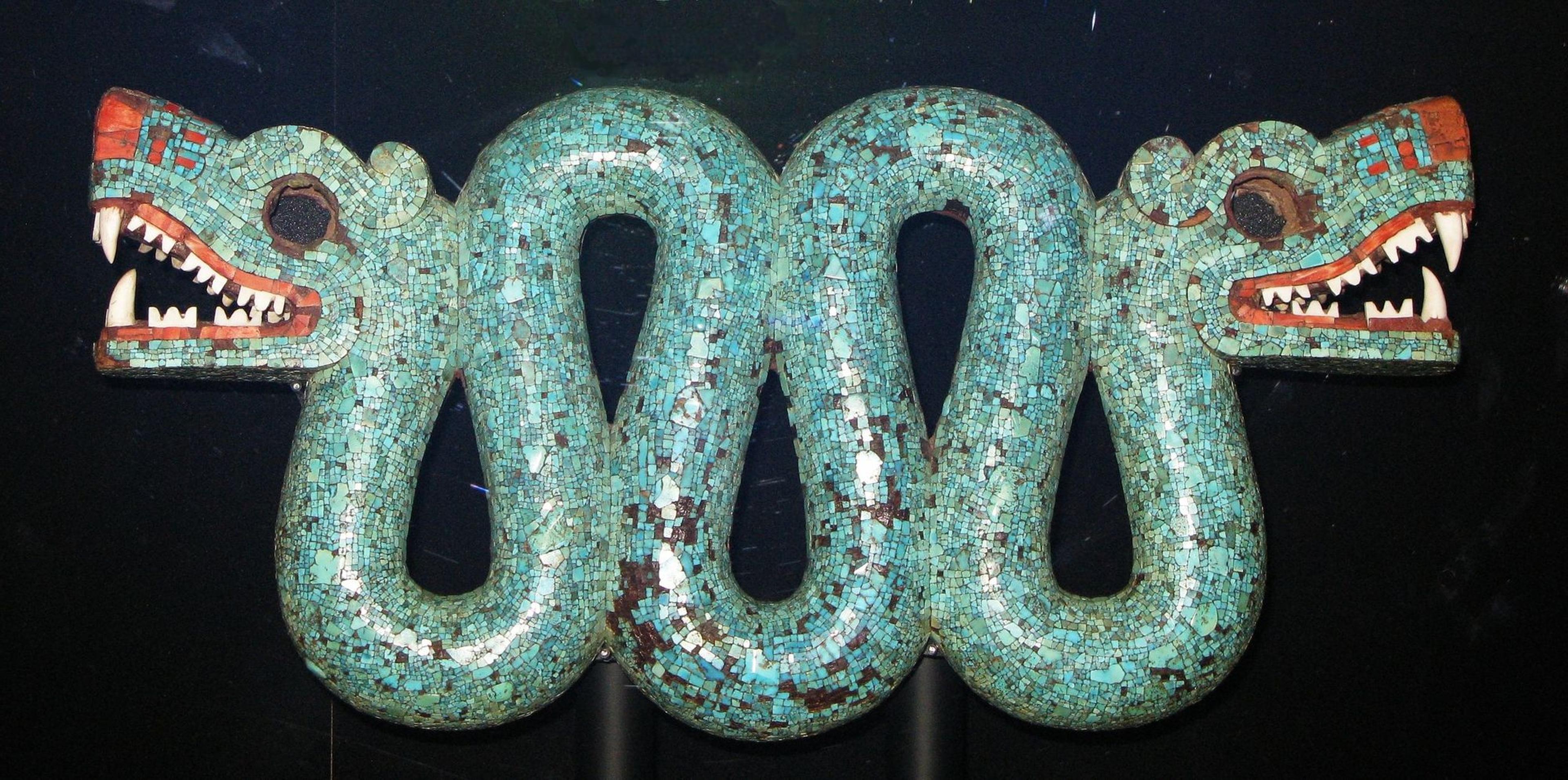by Amy Azzarito
Turquoise is one of the world’s oldest gemstones. Ancient cultures around the world believed the stone bestowed health and good fortune upon its wearer. In the 12th century, Arab writers even recommended staring at turquoise early in the morning to improve a person’s vision.

Shank of a cylinder amulet ca. 1878–1840 B.C.
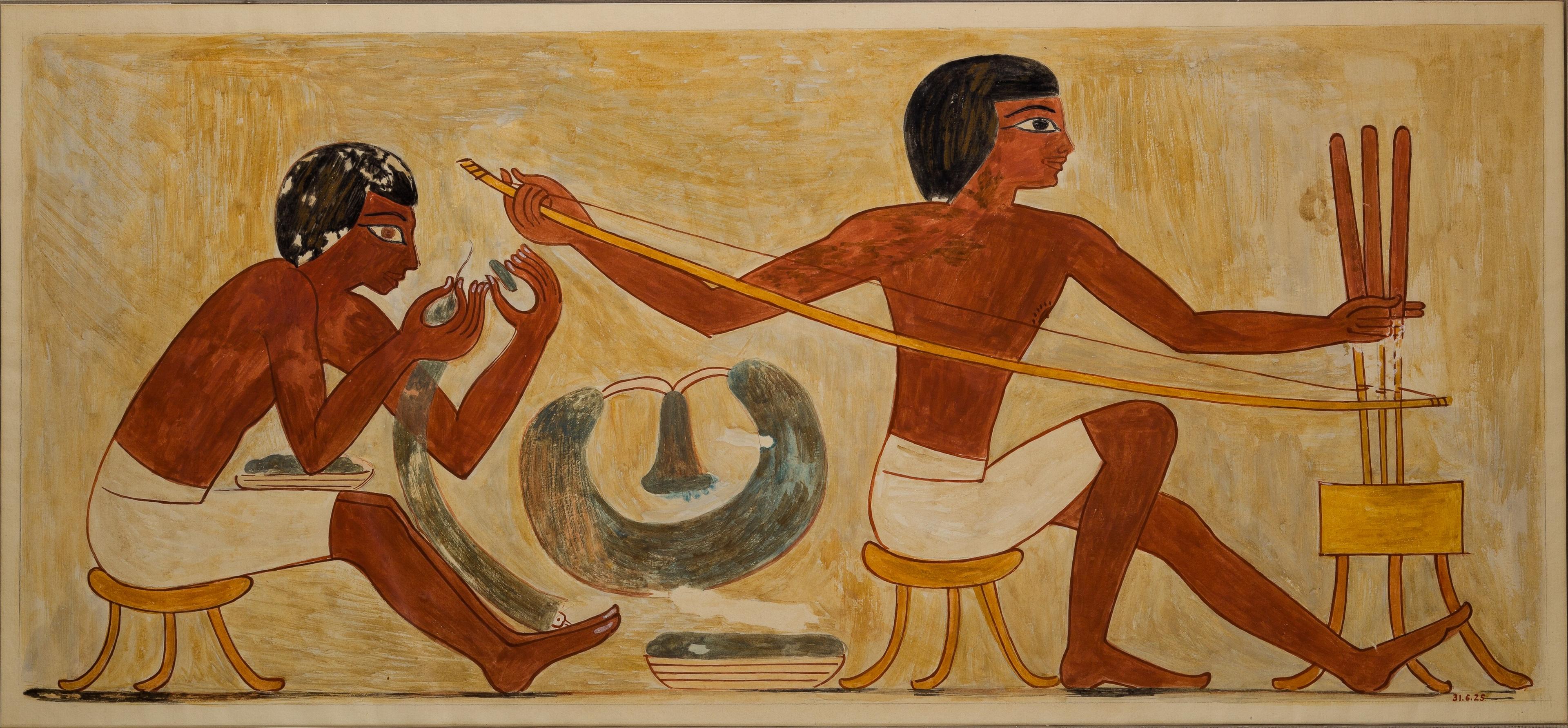
Stringing and Drilling Beads, Tomb of Rekhmire ca. 1504–1425 B.C.
The oldest turquoise mines are in the Sinai Peninsula of Egypt. One sat near an ancient temple dedicated to Hathor, the Egyptian goddess of love and joy who was worshiped as a protector in the desert and as the patron saint of mining. Egyptians called turquoise mefkat, which meant “joy” and “delight.”
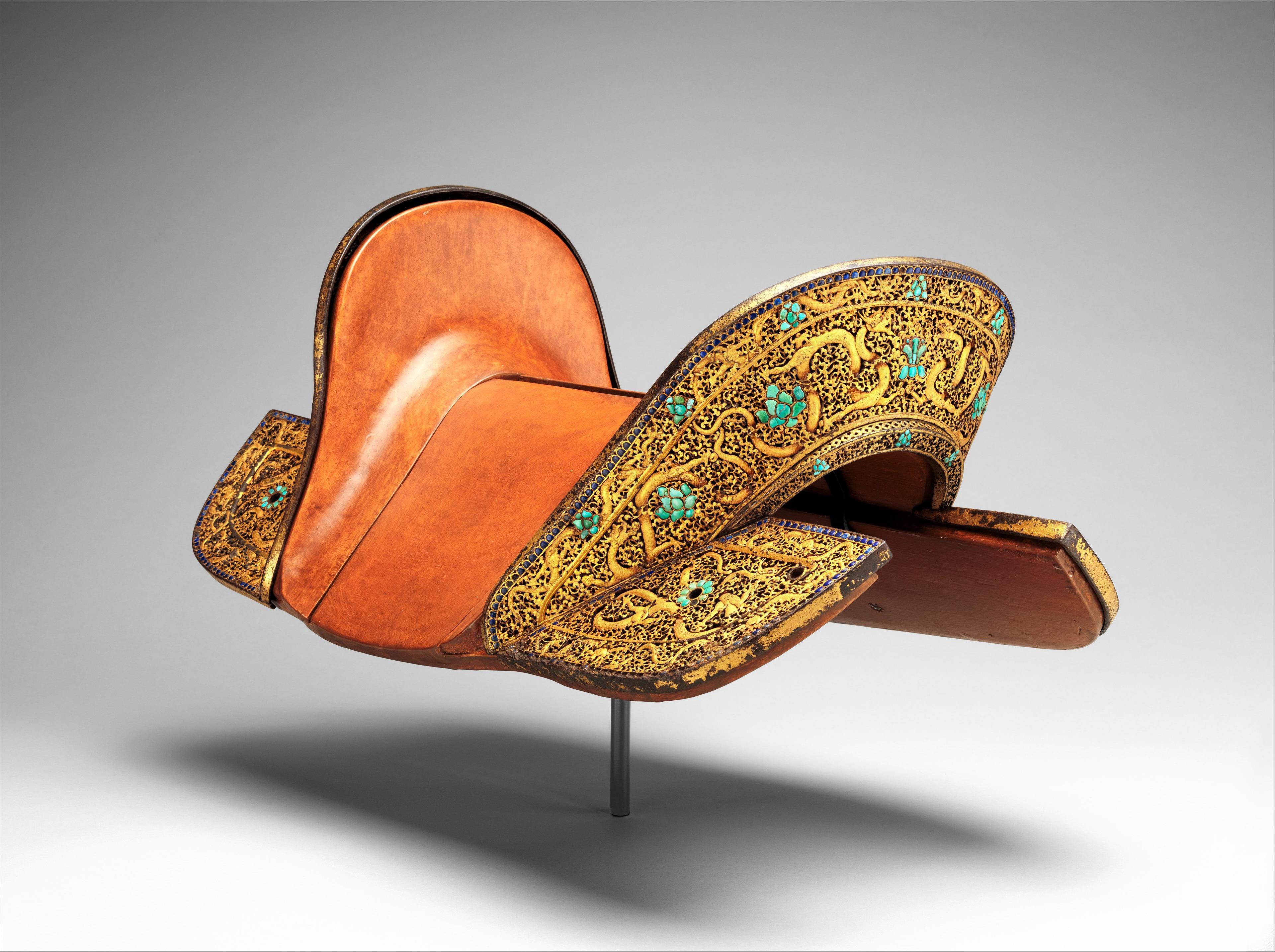
Saddle plates, c. 1400, Tibetan, Metropolitan Museum of Art
Modern Iran has been a source for turquoise for at least 2,000 years. The Persians adorned their daggers and horses’ bridles with it as guarantee for a safe ride. Their name for it was "pērōzah" meaning "victory". The stone was considered to be the most powerful amulet against the Evil Eye and it was customary to hang a turquoise pendant around a baby’s neck as protection.
Then, in the 13th century, the stone traveled with Turkish traders on the Silk Road from the Middle East to Europe.
The word “turquoise” comes from the French pierre tourques for “Turkish stone.”
Belief in the stone’s healing and protective qualities traveled with it. Turquoise allegedly turned pale when the wearer was sick, losing color when the wearer died and then returning to its original color once in the hands of a new owner. By the Georgian era, the stone had also developed a sentimental association with love and friendship.

Why wear one turquoise tiara when you can wear two? Note the...
The portrait below was painted to commemorate the attendance of Frances Anne, Marchioness of Londonderry at the coronation of William IV in Westminster Abbey in 1831. She is wearing many of her celebrated collection of jewels - partly inherited, partly bought - from the wealth of her coal mines, and partly the gift of Tsar Alexander I (who was obsessed with her after seeing her portrait).

Portrait of Frances Anne Vane, Marchioness of Londonderry
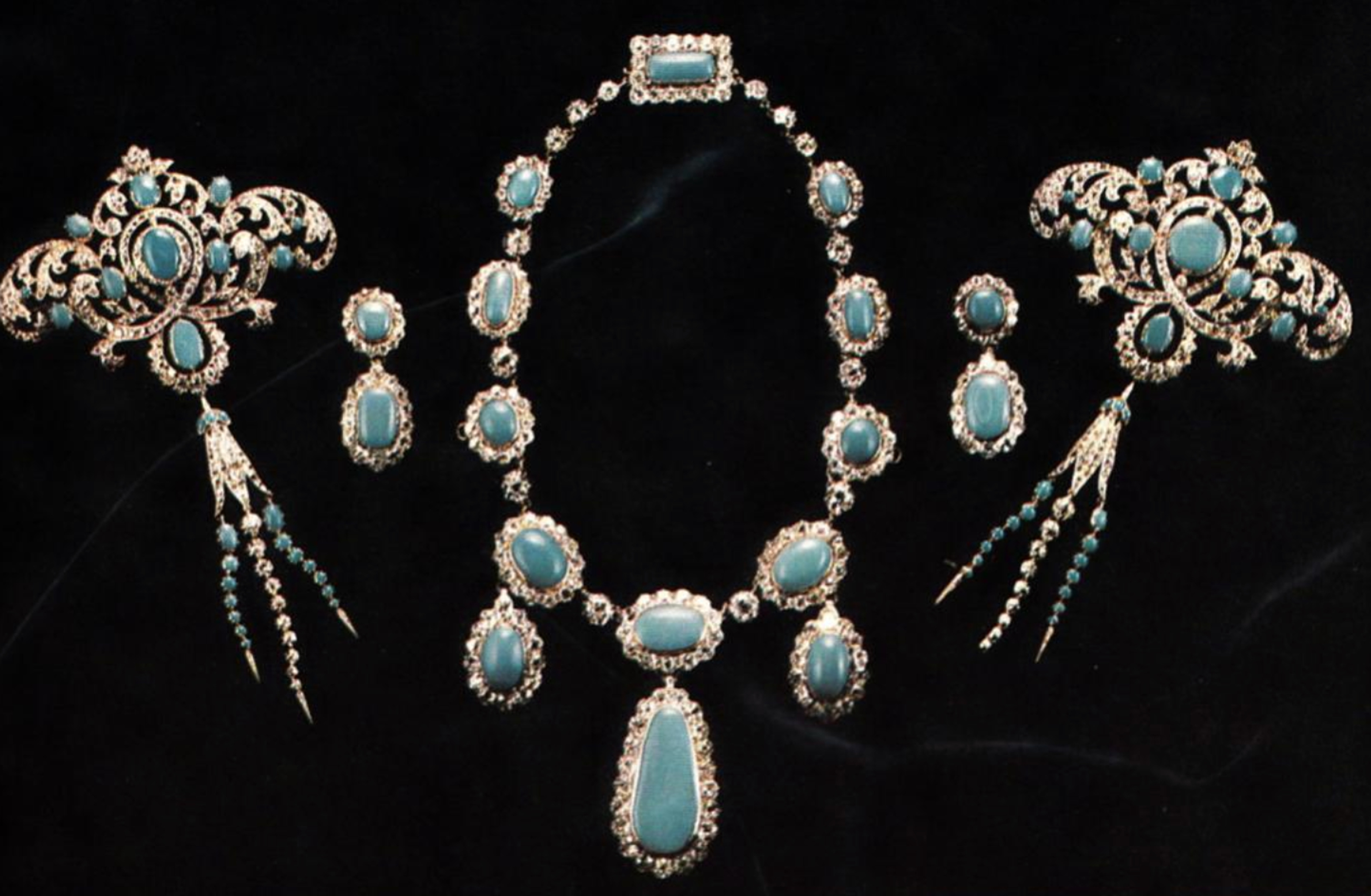
Turquoise parure from the Marquess of Londonderry family collection
The turquoise sewn onto her skirt are pieces of her Turquoise parure (again, that fancy French word for set), which had been purchased in 1820 by Count Ferdinand Palffy, an Austrian count with a turquoise obsession.
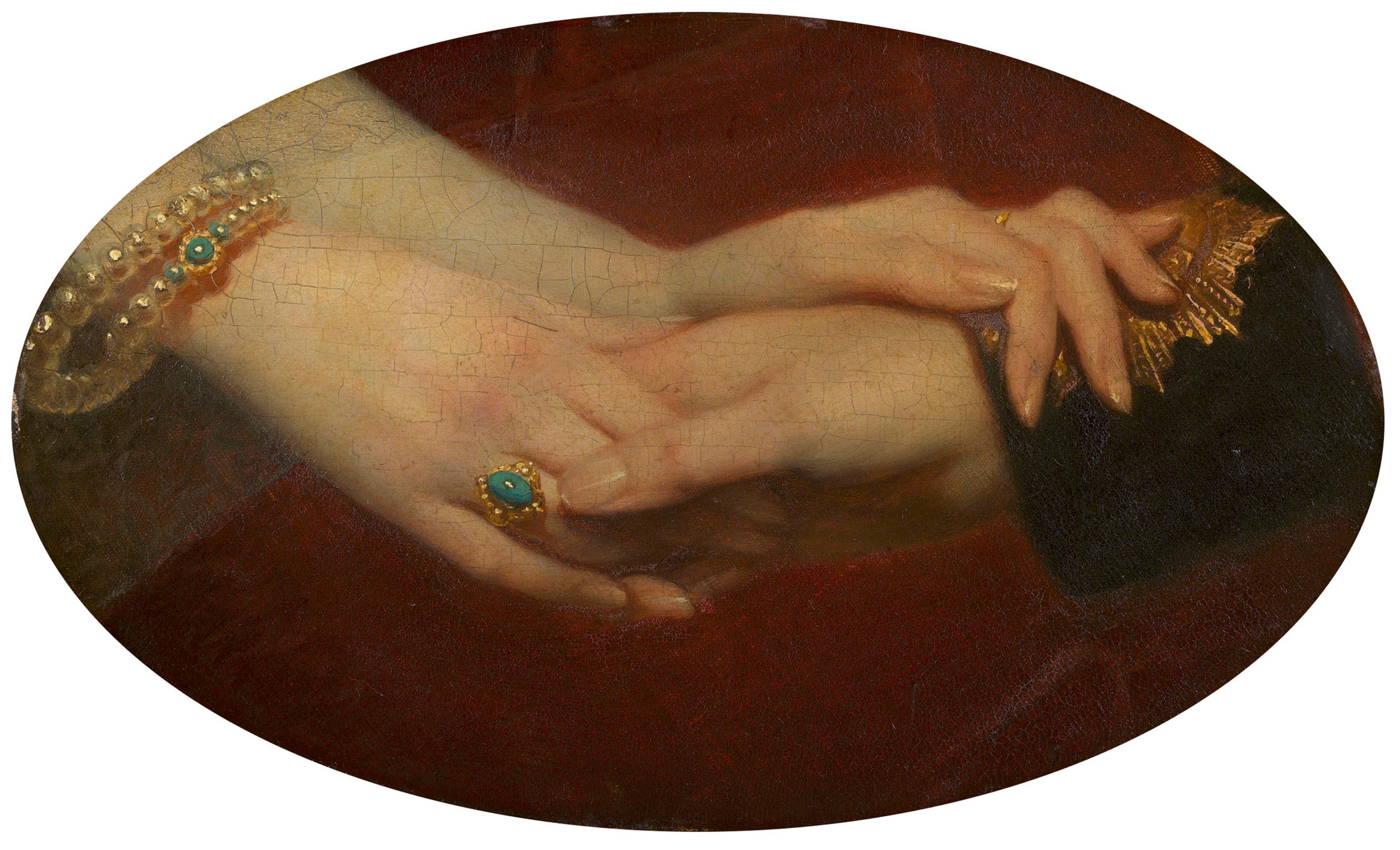
Linked hands of Victoria and Albert, Franz Xaver Winterhalter, in the Royal...
Our favorite trendsetter, Queen Victoria, wore a turquoise and pearl ring given to her by Albert. In addition to all its healing powers, the turquoise was a symbol of fidelity. She also owned a silver and gold hinged ring with clasped hands, set with diamonds and turquoises, which open into an inner ring of two hearts. That ring was gifted to the Queen by her mother on Prince Albert's birthday in the year of their marriage.
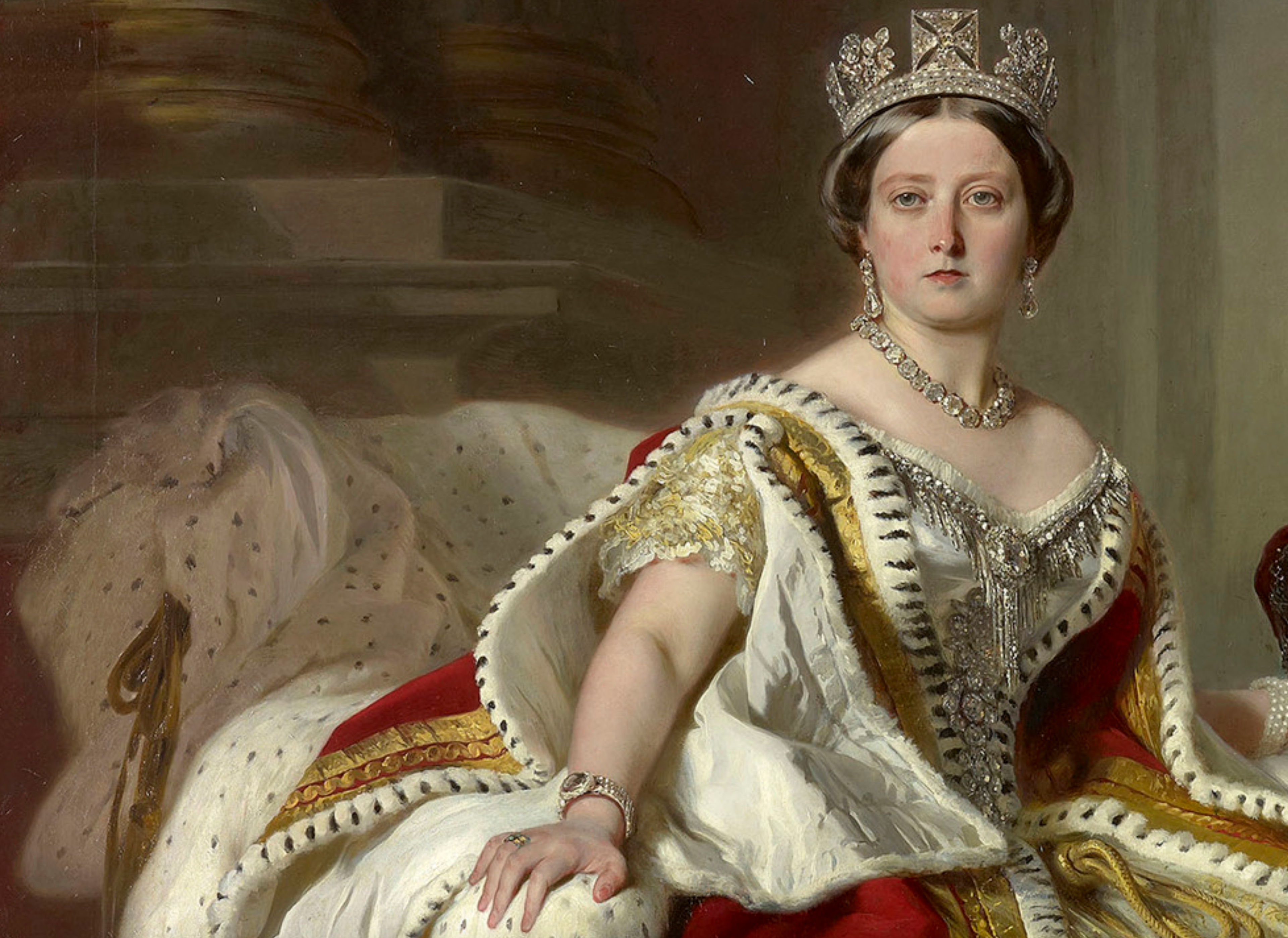
Queen Victoria, 1859, Franz Xaver Winterhalter (wearing her turquoise ring)
Turquoise was also Queen Victoria's go-to when it came to gift-giving. As a gift for participating in her 1840 wedding, she gave portrait rings to each of her ladies-in-waiting; each miniature portrait was surrounded by turquoise cabochons. Prince Albert designed a turquoise brooch in the shape of an eagle as a gift for each of the queen's train-bearers, who held her white satin train (it was six yards long) as she walked down the aisle of the Chapel Royal of St. James Palace.

A gold mesh bracelet mounted with a miniature of Queen Victoria in...

Brooch in the form of the Coburg eagle, with pave-set turquoises designed...
Napoleon married his second wife Marie Louise of Austria in 1810. (She was younger -- and he hoped -- more fertile than his ex-wife Josephine.) In honor of their marriage, he presented her with a tiara that held 79 emeralds and more than 1,000 diamonds (700 carats worth!)

Marie Louise of Austria, 1810.
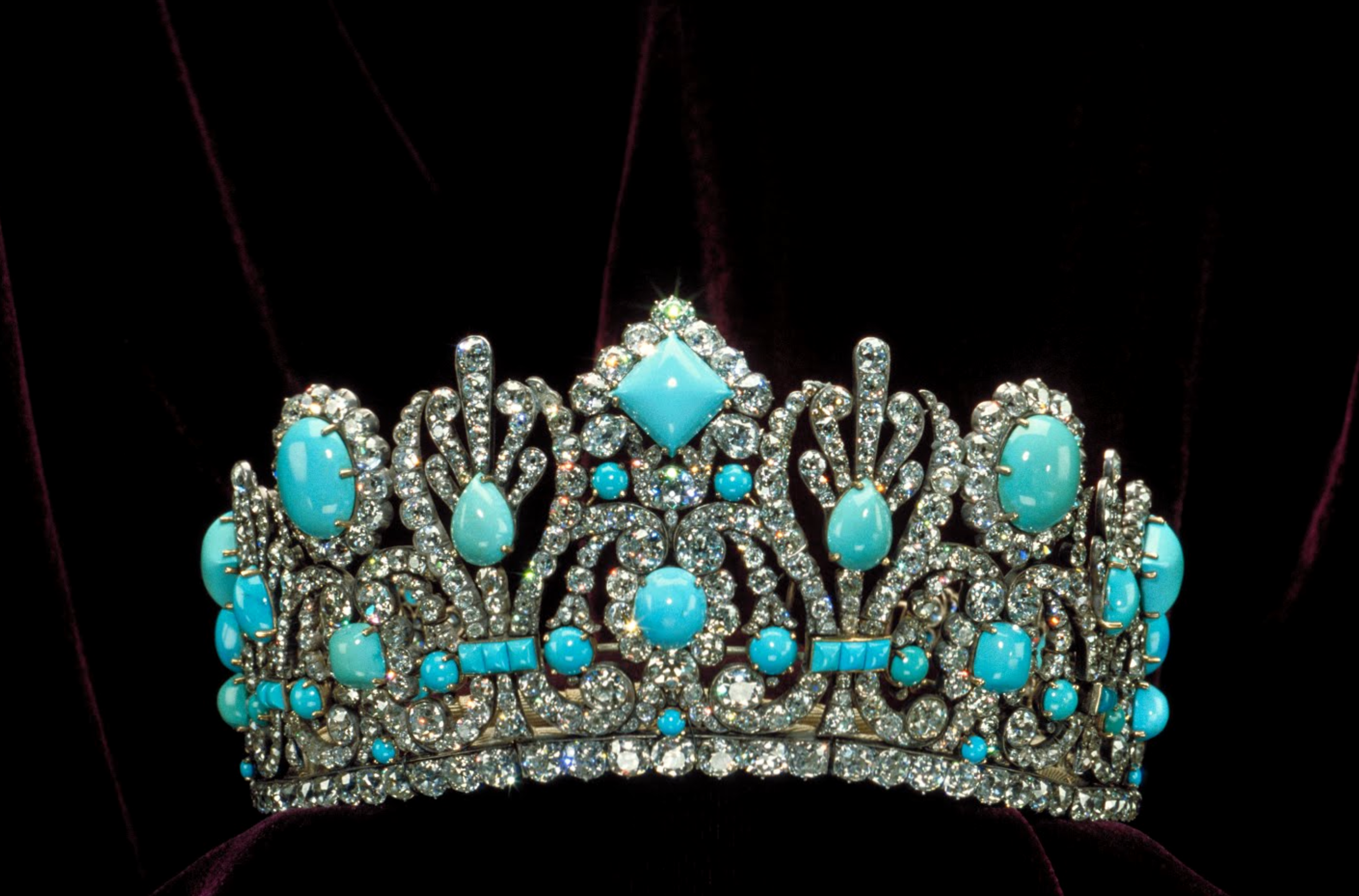
Diadem of Marie-Louise set with Persian turquoises, surrounded by 700 carats of...
In 1953, the tiara was sold to Van Cleef & Arpels. The jeweler put the tiara in the shop window and offered clients a piece of history -- an emerald from the Napoleonic tiara. The emeralds were sold off and were replaced by 540 carats worth of Persian turquoise. The re-worked tiara was purchased by Marjorie Merriweather Post (General Foods heiress and original owner of Mar-a-Lago.)
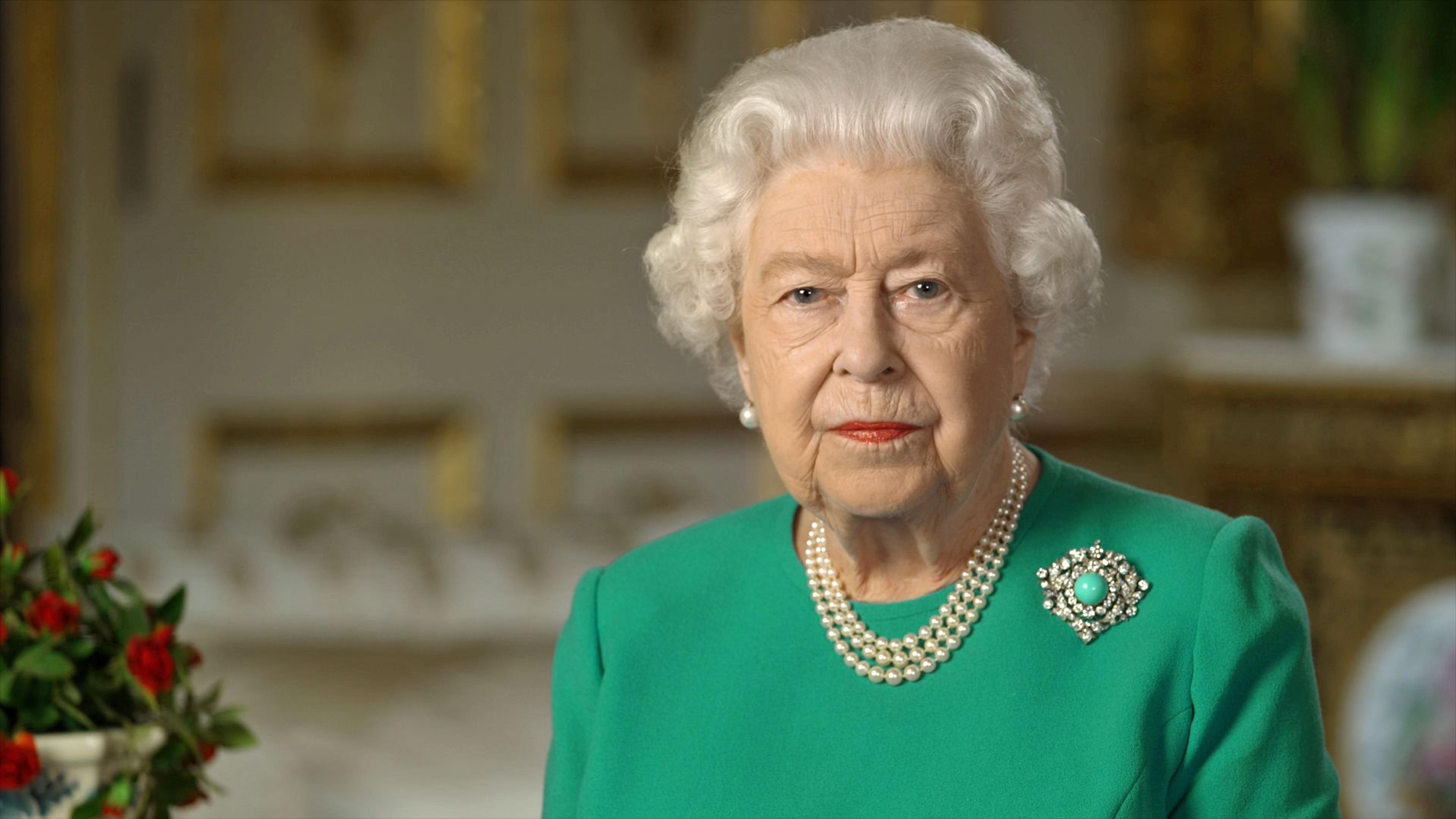
Queen Elizabeth II wearing a turquoise brooch in her April 2020 Covid...
When Queen Elizabeth II addressed the UK and the Commonwealth in her Covid speech in April 2020, it was only her fourth address in her 68-year reign. She choose to wear a turquoise brooch inherited from her paternal grandmother, Queen Mary. For someone with a museum full of jewels, this wasn't an accident. Not only was the Queen likely channeling the stone's healing powers, but it was also a symbol of hope.
